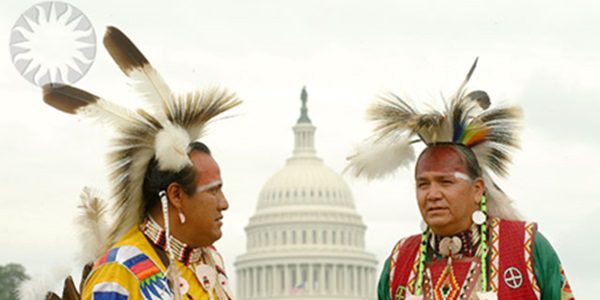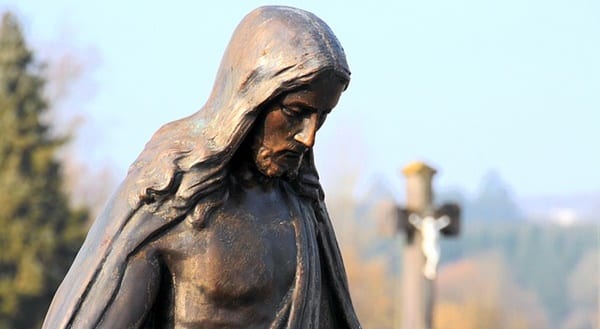
Pastors have a frequent question when they begin to discover mimetic theory. “That’s great. But how does it preach?”
Reverend Tom Truby shows that mimetic theory is a powerful tool that enables pastors to preach the Gospel in a way that is meaningful and refreshing to the modern world. Each Wednesday, Teaching Nonviolent Atonement will highlight his sermons as an example of preaching the Gospel through mimetic theory.
In this sermon, Tom continues his series on Paul’s letter to the Galatians. Using the latest research, Tom explains that the Roman Empire treated the Galatians much like the United States has treated Native Americans. Tom asserts that
Paul’s insistence that Gentiles don’t need to be circumcised was an act of political subversion. Circumcision became an act of Jewish loyalty to Rome. Tom writes, “The Judeo-Christian teachers from the mother church in Jerusalem wanted the Gentile Galatians to be circumcised to conform to the dictates of Empire as though Caesar was their Lord rather than Christ.” We are confronted with the same question today, “Who is Lord – Christ or Empire?”
Year C, 3rd Sunday After Pentecost
June 5th, 2016
By Thomas L. Truby
Galatians 1:11-24
Galatians, Indians and Empire
In 2015 the theme of our Annual Conference was “Restoring the Sacred Circle.” We talked about how we had historically demonized and excluded our Native Americans, that some of our own Methodist ancestors had led in that effort, particularly at the Massacre at Sand Creek in Colorado, and we in a worship service formally asked forgiveness from native peoples for what we had done. As part of that process we agreed to take the issue back to our churches, talk about it so that we recognized that we had done this and built these attitudes into our contemporary culture, and then, finally, do something inclusive of Native Americans to show that we really meant it when we said we wanted to restore the sacred circle.
This week our district office sent out an email, since we are now approaching another Annual Conference, asking about what we had done to fulfill our pledge. The email read:
Would you please contact the district office to share what your local congregation has done or is doing? Did you have a study of “This Spirit Walk” (apparently a book or study on the issue)? Have you made contact with Native Americans in your community? What relationships have formed? What doors have opened? We look forward to hearing from you!
On Monday I received an email from Paul Neuchterlein where he described how he had worked with the Galatian passage last week in his sermon by making an analogy between how we treated our Native American people and how Rome treated the people of Galatia. His thinking was based on a new book (2010) by Brigitte Kahl entitled Galatians Re-imagined: Reading with the Eyes of the Vanquished. Paul Neuchterlein thinks this may be the most important book yet in our deepening understanding of Paul’s letter to the Galatians. I ordered the book that arrived 5 minutes later on my iPad but haven’t had time to read it.
Being an opportunist, I saw an opportunity to kill two birds with one stone (even that image troubles me now). I could make us more aware of how we treated American Indians while at the same time continue our focus on the book of Galatians and the struggle Paul had with those he called false teachers who followed him.
We’ll start with the Sand Creek massacre as reported in Wikipedia: “The Sand Creek massacre was an atrocity in in the American Indian Wars that occurred on November 29th, 1864, when a 700-man force of Colorado Territory militia attacked and destroyed a peaceful village of Cheyenne and Arapaho in southeastern Colorado Territory, killing and mutilating an estimated 70—163 Native Americans, about two-thirds of whom were women and children. The location has been designated the Sand Creek Massacre National Historic Site and is administered by the National Park Service.”
In the “civilized” Roman Empire the Galatians were conquered people similar to Native Americans. Being “uncivilized” barbarians who lived outside Roman law and culture, the Celts were seen as unclean, crude, and subhuman. Killing them was a good thing since it purged the world of vermin making it safe for the peace and progress of Roman expansion that they saw as the bringing of civilization. Rome and conquered cities were filled with Roman art-propaganda that depicted a triumphant Roman soldier standing over a defeated and dying Celt, all carved into stone as though it had to be that way.
Roman expansion and control of the world was considered normal, right, and the will of God who they called Zeus. Zeus’ other name, for all practical purposes, was Caesar and the entire empire was to bow before him, except for the Jews. (I will have more to say about that in a moment.) While the tribes who lived north of the Mediterranean had many names for themselves, the Romans saw them all as Gaul’s, or Galatians, the Greek form. It was their name for “the Indians,” the strange other who occupied the wild lands that must be subdued.
Do you see how their attitude toward the Galatians was similar to European-American settlers attitudes toward those they called “Indians?” Of course this attitude continues to color our national consciousness and is now institutionalized in our reservations, laws and prejudices. We have made our original inhabitants “other” and built “togetherness” on their “otherness.” This is the reason we need to restore the sacred circle. We excluded them as un-Christian and therefore not compatible with our dream of empire. We didn’t seem to understand our dream of empire were incompatible with our commitment to Christ who loves and includes all.
It was all built into our way of thinking and a way of life and we couldn’t see. I grew up both intrigued by and afraid of native people because I thought they were different and lived in an area the people of northeast Nebraska called “the Devils Nest.” Can anything good come out of the Devil’s Nest? Actually it was the Santee Sioux Indian Reservation, an area of steep hills unsuitable for farming, that the government had “given” its Native Peoples.
I still remember meeting the American Indian family that moved to Magnet, Nebraska and came to our Methodist Church. They were the first minority I had ever been exposed to and I approached them with both curiosity and caution. I discovered that in most ways they were just like us; kind, gentle, intelligent, peace-loving but with a little darker skin.
This will tie in. Paul never intended to live in Galatia. Being a Jew and a Roman citizen, he probably didn’t think he had much in common with the Galatians. He wound up there because he was sick and they were kind enough to nurse him back to health. Though the empire told them they were second class and not to be trusted, Paul told them they were loved children of God just the way they were, as Galatians. Who knows, maybe their kindness changed Paul and helped him to see that God loves all his children. Maybe even he had prejudice toward Celts until he got to know them; after all he was part of the Roman Empire. It’s only after we get to know people that we realize we had a filter through which we viewed them before. That’s why we are being urged to make friends with Native Americans and to open ourselves to seeing life, our country, our history through their eyes.
We said that everyone in the empire had to bow before Caesar except the Jews. They had an exemption. They didn’t have to bow provided they allowed the Romans to rule in their usual Roman way. It was a unique compromise arrived at over many years that allowed the Jews to continue to believe they worshiped God alone while still living under Caesar. The marker for this was circumcision. Jews were circumcised, non-Jews weren’t. If you didn’t worship Caesar and go to his parades you had better be circumcised.
When Paul told the people of Galatia they didn’t need to be circumcised to be followers of Jesus he made the boundary unclear for the Roman bureaucracy. While the physical boundary was clear the political boundary had always been ambiguous, constantly negotiated and problematic. Now Paul was inadvertently drawing attention to it. He was going to create problems with Rome when the un-circumcised Galatians refused to worship the Emperor as required.
If this is true, the controversy is not Gentiles being asked to become Jews before they could be followers of Christ. Nor is it Christianity versus Judaism; after all there were no Christians at this point. No, the Judeo-Christian teachers from the mother church in Jerusalem wanted the Gentile Galatians to be circumcised to conform to the dictates of Empire as though Caesar was their Lord rather than Christ. Is Christ, the gentle and non-violent lover of all life, our Lord or is Empire, built on the violence of divide and conquer the highest loyalty. Suddenly it is an issue we all must face in our violent world that asks us to choose whom we will follow. If we follow Christ as Lord we could come into conflict with Caesar and with our neighbor who may see us as unpatriotic.
Paul says we should follow Christ and not give up our freedom by bowing to Caesar. If we bow he says we will find ourselves in the grasp of this present evil age. The representatives from the mother church in Jerusalem, fearful of where freedom not granted by empire leads, want the Galatians circumcised to preserve their uneasy relations with Rome. It’s the line I find myself struggling with on every patriotic holiday. How do we negotiate the non-violence of Christ in relation to the inherent violence of Empire—a violence our Native Americans know well and from which they are still trying to recover? Amen.











